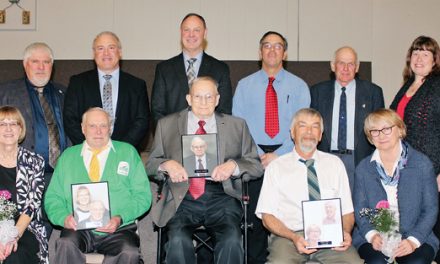By Terry Tinkess
AgriNews Staff Writer
Imagine scanning an object, and from that scan being able to create a three-dimensional duplicate. Now, imagine being able to do this without the process of using expensive and time-consuming moulds. Amazing, right? Well, not only is it amazing, but the technology exists today, and has been around for a while although the areas where this technology could be used continues to expand.
3D printing, or additive manufacturing as it was known, first made an appearance in the early 1980s, in Japan, as a method of rapidly creating a prototype using a layer-by-layer approach with a photosensitive resin that was then polymerized with UV light.
A few years later three French researchers attempted the same thing, instead by curing a liquid into solids by use of a laser.
Eventually it was an American furniture builder, Charles Hull who filed a patent for what he described as Stereolithography, (SLA), curing photosensitive (light sensitive) resins in a layer-by-layer process. Hull had been attempting to devise a way to create small, custom parts quickly and easily.
Other variations continued to be developed, two of the most important being Selective Layer Sintering (SLS) which used a laser to fuse powders rather than liquids and Fused Deposition Modeling (FDM), also known as Fused Filament Fabrication (FFF), which uses a filament squeezed out of a heated nozzle. This is currently the most common method used.
As the technology continued to develop, 3D printers began to become available commercially, but two events combined to create the multitude of uses seen today. The first was improvements in computer aided design (CAD) tools, which enabled better virtual models to be created on the computer. The printer can only utilize the information you provide it with, so as virtual models improved, so too did the quality of product the printers were able to produce.
The second event was the availability of the technology as Open Source, which allowed more input into its development and the release of the FDM patents into the public domain, which allowed more research and development to occur on top of the already tested technology.
Today, prices continue to drop and uses for the technology continue to expand. Where originally the things that were manufactured were polymer based, today carbon fibre and glass fibre and some metals can be moulded into just about anything you can imagine.
You would be hard pressed to find an industry in which an application for 3D printing doesn’t exist. It has many uses in the healthcare field, including the creation of prosthetic limbs. Any industry involved in manufacturing can make use of it, either to create prototypes or small parts, including parts for discontinued or antique machinery, for which spare parts are almost nonexistent. Museums can create accurate copies of fragile artifacts which can then be put on display while the original is preserved. They have even been used to create actual full-sized homes, with the capability of producing a building shell in a matter of days instead of the months that might be required using traditional methods.
Do you want a scale model of yourself or perhaps a bobble-head? No problem.
The uses for the technology are limited only by the imagination of those using it. The technology isn’t restricted to those with large bank accounts either. 3D printers are less than $200 literally anywhere for small, consumer level models. Capabilities increase with the price of the model chosen. Best Buy, Staples, Amazon, and Walmart all have consumer level 3D printers available at various price points.
If you don’t feel the need to own your own 3D printer, there are many companies that have built their business on providing 3D printing services, many of which you can simply send your CAD drawings to and wait to receive the finished product, eliminating the need to drop by in person. If you prefer the in-person approach, there are several locations in Ottawa.
Locally, there are companies that offer 3D printing services, but you can also find them in the SDG public library branches in Finch, Winchester, Morrisburg and Alexandria. (They advise calling ahead to ensure availability.) You can find out more at https://sdglibrary.ca/3d-printing.
As technology continues to evolve the quality of the product improves as does the choice of materials used while the cost continues to drop. The days of hunting for that replacement part may be over. If you can scan it, you probably can print it too!











